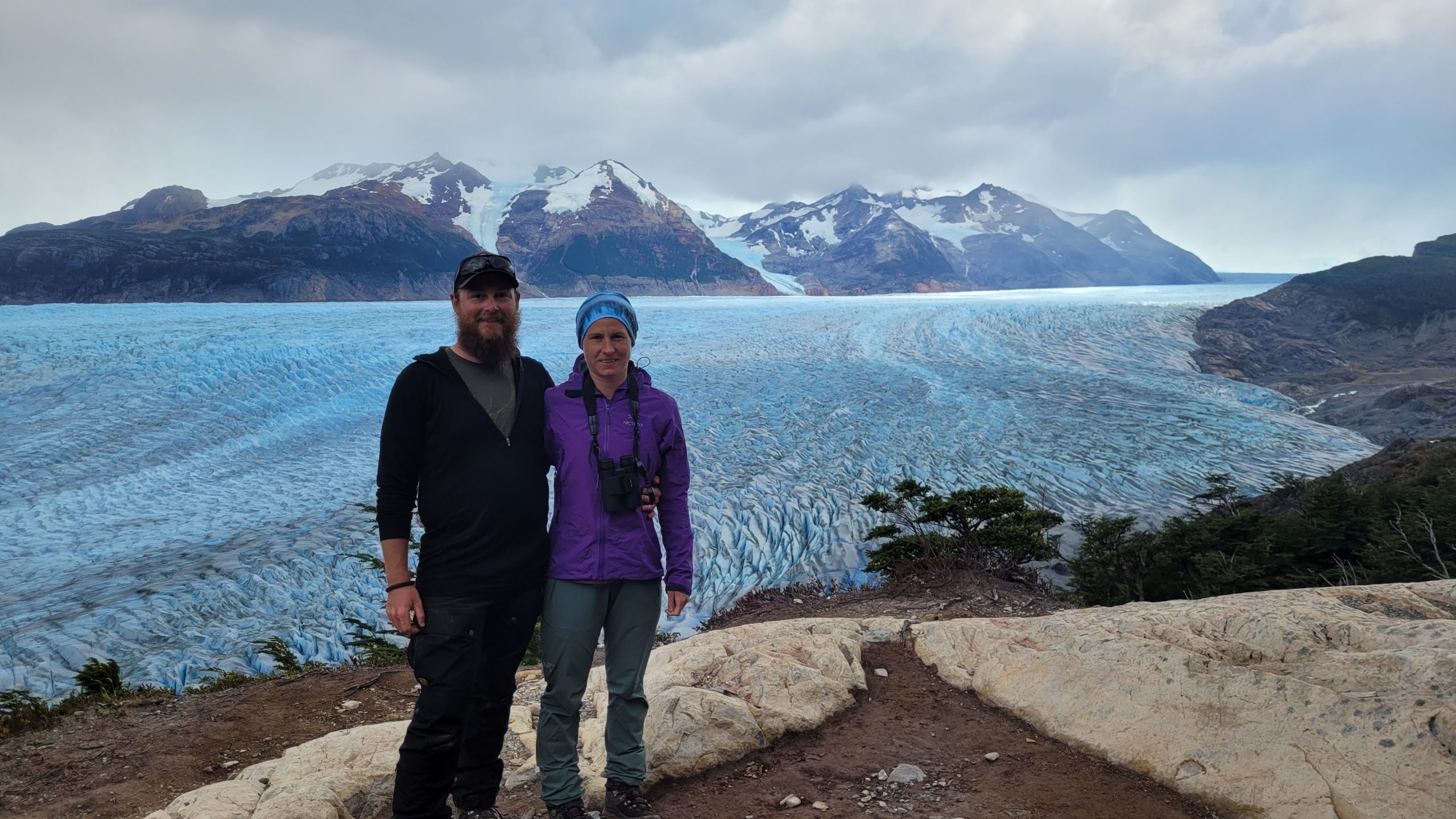Introduction
I had been eyeing up a pair of the Fjallraven Keb pants for quite a while but was always hesitating about the price ($250 CAD). Then on our recent honeymoon trip to Chile, I happened upon a pair of Keb pants in a small gear shop in Puerto Natales for about $220 CAD. I bought them the day before we began our O-Trek in Torres del Paine National Park and wore them for the full 7-day 100km trek.

This is going to be a quick write-up covering first impressions and an initial review from my early use. Once I get more time with them in the field I will put together a more fleshed-out review.
The Pants
Pretty much every gear review I see leads off with a long, elaborate description of what the item is. Usually almost a cut-and-paste copy of what the company says about their product. I am going to skip that and just mention what drew me to them.
Most folks in the outdoor sphere will have heard of and seen Fjallraven pants around. They are a distinct fusion of older and newer styles to produce some very interesting pants. The Keb is a mix of their heavier weight cotton G-1000 fabric and a nice stretch nylon material. Fjallraven pants are well known in the bushcraft community for being very hard-wearing and long-lived pants, something of a ‘Carhartt’ of camping.

Image from Fjallraven’s website
https://www.fjallraven.com/ca/en-ca/men/trousers/trekking-trousers/keb-trousers-m-reg
The main features of the Keb that caught my eye are:
- The softshell panels for mobility
- The hip zips for ventilation
- Large but not unwieldy thigh pockets
- Large and well placed hip pockets, easily accessed with a pack hip-belt on
- Articulated knees and seat
- Adjustable cuff to seal around boots
The thigh pockets were the major feature of the Keb to separate them from the other Fjallraven pants to me. They have one large bellowed pocket on each side, the left side has a zip-closure in addition to the snap closure. There is also a small stretch pocket inside of the right side cargo pocket to secure small items within it. Most of the other Fjallraven pants have assorted, smaller pockets; good for specific items but not as a general cargo pocket.
First Impressions
My first impression of the pants while wearing them has been very positive. I have found them to be well fitted while not binding. The G-1000 material on the seat, knees and lower legs is well located to provide solid reinforcement. The stretch nylon softshell has been comfortably stretchy and well located to maximize mobility in the pants. I have yet to find any issues with mobility in them between well-designed articulated panels and the use of stretch nylon.
The pockets have worked well to hold the items I usually carry. I do not generally load my pockets right to the max, but they will have a few items carried handily. The hip pockets are nice and deep without being so large that they flop loosely when carrying small items. The slash openings on them are easy to reach into while wearing a pack.
The adjustable cuffs have several positions with an elastic segment. Making them easy to close snug around boots but still stretch enough to easily pull on and off without adjusting each time. I found this to be a welcome combination on the O-Trek to keep scree and burrs out of my boots without the annoyance of constantly having to tighten and loosen a static-only adjustment.
Initial Review
After the week of use on the O-Trek, I have an initial review of the Keb pants. For our trip we had weather from about 10C to 22C, there was pretty limited precipitation during our trip. In this weather I found them to be a great pick. They were windproof enough to not feel the 80-100 km/h winds at a couple of points on the trip. The hip vents worked well for dumping heat on the harder climbs and warmer days.
A couple of features I didn’t notice until I was on the trail that I appreciated were:
- the hip vents have 2 sliders that both open towards the middle
- the waistband ridges for suspenders
The hip vents opening from both ends allowed me to open just partially from either end as well as open both ends to the middle. This allows significant venting while keeping them less wide open to reduce how many shrubs I catch them on and reduce the amount of debris that falls into them.



The little ridges on the top of the waistband for clipping suspenders onto also help keep the pants up. By ensuring that the little ridges are above the belt when tightening the belt they will prevent the waistband from pulling down under the belt.

Both of these features were examples of little things that have been well designed on these pants.
The lower zippers to allow access to the top of your boots and socks are interesting but so far I have yet to make use of them.
The G-1000 cloth has so far shown itself to bead off the water quite well despite not yet being wax coated with the ‘Greenland Wax’ that Fjallraven sells for increasing water resistance.
Closing
So far the Keb pant has exceeded my expectations for workmanship and design. I haven’t had them long enough to truly come to a final verdict but so far it looks good. In warmer weather I feel that I will find them to be on the warm side, the hip vents do increase breathability but they are heavier duty pants. I expect that they will be my go-to pants for trips between around -5C to 20/25C. In cooler weather, I have other warmer pants, and if it will be much warmer than the mid-low 20C range consistently then I would prefer a lighter, more breathable pair of pants.
